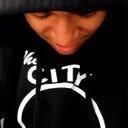Tearing Down The Cognitive Wall: Part I
Bridging the gap between designer and developer.
Early on in my education, I’ve noticed how many people separate their (and others’) cognitive processes in terms of “left-brain” or “right-brain” thinking. Typically, a “left-brained” person should be more analytical, precise, focused and logically minded; hence a developer. While a “right-brained” person should be a creative, artistic and open-minded; ergo a designer.
For the most part, it’s always been this way. Of course, you can’t forget the superstars that have tapped into both disciplines—Jack Dorsey (Twitter/Square), Jonathan Ive (Apple), Mari Sheibley (Foursquare), Loren Brichter (Apple) and Jean-Marc Denis (Google).
I’d like to consider this paradox in juxtaposition to the Berlin Wall—in this case, the developer and design represent East and West Germany, respectively. However, this is no history lesson. It is an ongoing transformation in my day-to-day life; an uphill battle to become a rockstar designer AND a programming ninja.
“I’m steadily chipping away—one day at a time.”
If we would’ve ran into each other five years ago, I certainly would have introduced myself as a graphic designer or a web designer (depending on your reaction). That still has yet to change. To this day, I still consider myself to be a design-centric thinker. Does that make me a “right-brainer”?! I think not.
I use the design process as a guide to help me uncover neglected issues and to establish clear, open communication to my team about features, goals and implementation strategy. This process enables me to put more focus on designing for the end-user, rather than writing flawless code that functions exactly as it was originally intended. When I work with this design mindset, I’m innovative, a tinkerer, methodical, and driven. I feel unrestricted; creativity is limitless. I can truly feel the product coming together naturally.
“I’ve seen through the cracks in the wall.”
As I said earlier, I’ve got experience in web design: HTML, CSS, JavaScript, jQuery, etc. (Shameless plug alert!) I have a broad scope of projects in my portfolio. But late last year, our CEO gave me the opportunity to take a crash course in mobile development—iOS development to be exact—and I ran with it. The experience was definitely (and still is) the polar opposite to what I was accustomed to.
My life has turned upside-down as I’ve replaced color swatches and Photoshop filters with Objective-C and Stack Overflow. My hands no longer reach for pens and thumbnails, but for Terminal, GitHub, Xcode and iOS Simulator. I used to have vivid, passionate dreams painted with bright colors and imagery; now I dream about code, solve problems sub-consciously, and store bug fixes in my dormant brain to retrieve the next morning.
“The first chunk of the wall has been pulled apart.”
With my second major iOS project on schedule for shipment next week, I have finally come to terms that I cannot chose between being a designer or a developer. I must be happy claiming and answering to both disciplines. Developers and designers alike strive for simplicity and clarity, some more than others of course. Both, in the end, want to make their creations easy to intuit and work with as possible.
Developers spend the early stages of the project scoping tasks and goals, configuring resources and overcoming any work-blocking issue that may pop up in the process—they ask not how something can be done, but how to do that thing the correct way. And in the later stages, they hone in our their logical skills to refactor complicated methods and functions and try to break them down to simple, easy-to-follow code blocks and update their logic as requirements change (which they always do!).
Designers, however, handle the early stages in almost the exact opposite manner. They are motivated by the end result—the problem that they are trying to solve. And have a much harder time strategizing how to get the job done correctly from the initial concept. The work that went into planning this project turns into a masterpiece filled with flashy user interfaces, and sleek, cool animations.
“The wall has finally crumbled into itty bitty pieces.”
Now the two disciplines don’t seem so distant and disconnected. They actually seem to work together quite well! Having a wall blocking access to and from both worlds does nothing but halt communication and progress. Let’s conjoin both disciplines; they both have similar traits, skills and motivations.They just happen to work in different mediums and have different specialities. I have started to use this in my favor—to become, what we call in the tech world, a unicorn.
I now know that being a rockstar designer and a programming ninja is practical AND highly desirable for many reasons. And becoming a unicorn is by no means an impossible feat to accomplish. With enough time, effort and experience, I’m confident I will be at that level in no time. And you certainly can as well!
